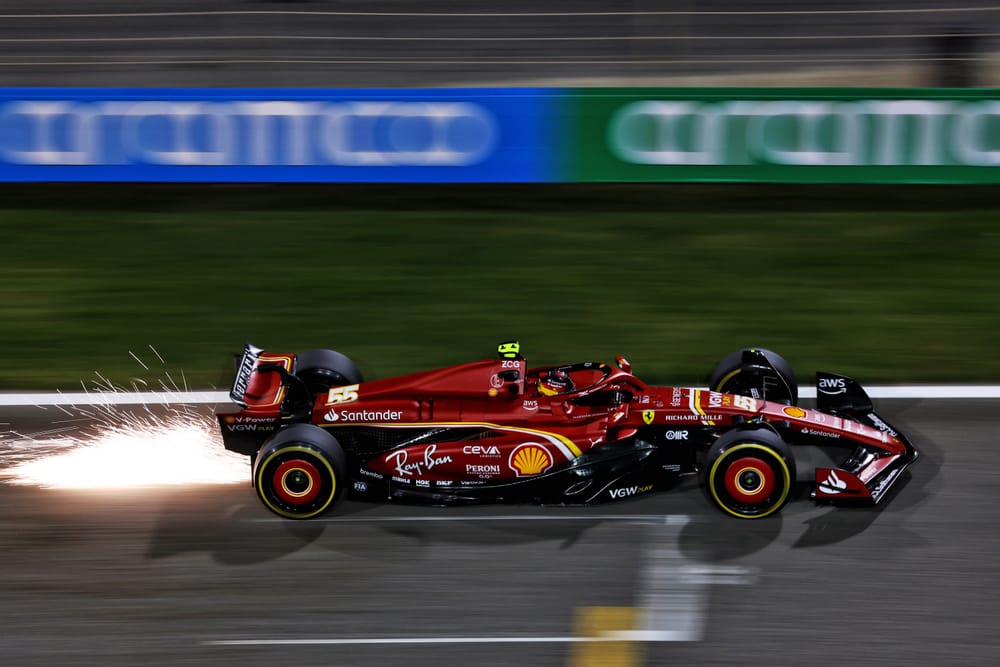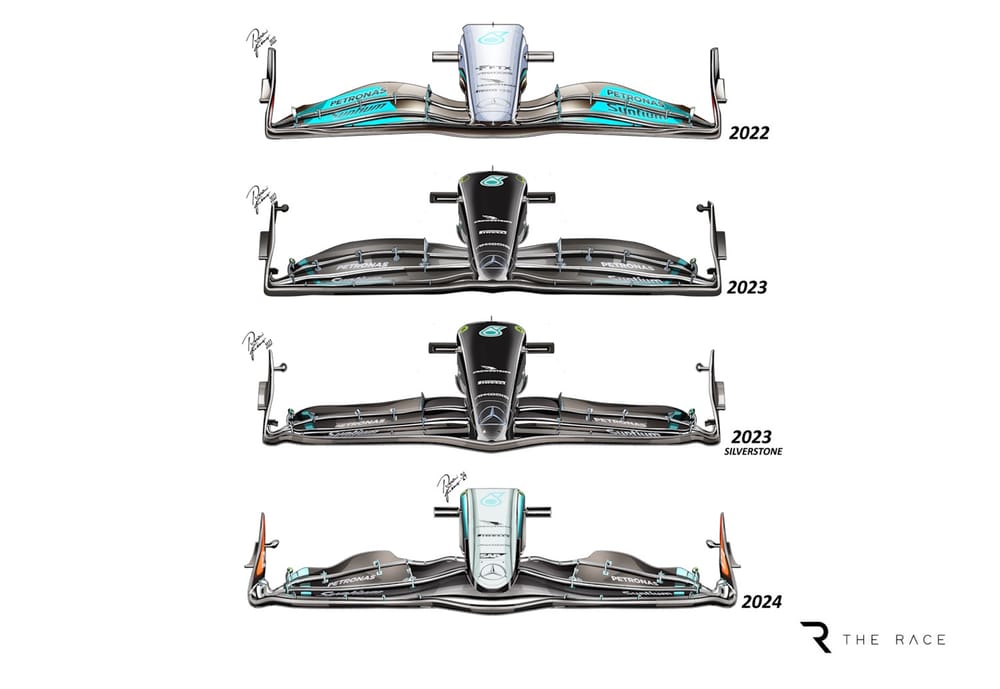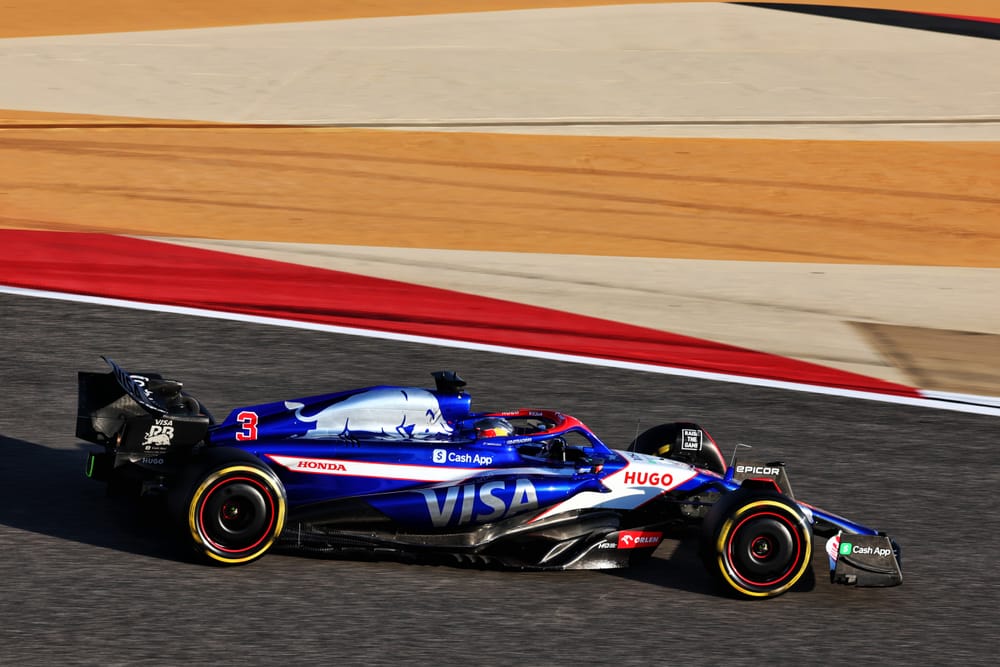Up Next

The first official test day of Formula 1's new 2024 season was very much befitting of a third year into a rules' cycle in terms of productivity - with all but one team recording lap counts comfortably in the triple digits.
Whether the field is as close as it should be, though, is another question - and while one day of running never contains all the answers, it seems clear that a bold design by the championship favourite team has hit the ground running.
Here are our writers on the biggest storylines from the eight-hour unofficial curtain-raiser of F1's 2024 campaign.
Red Bull’s ominous start
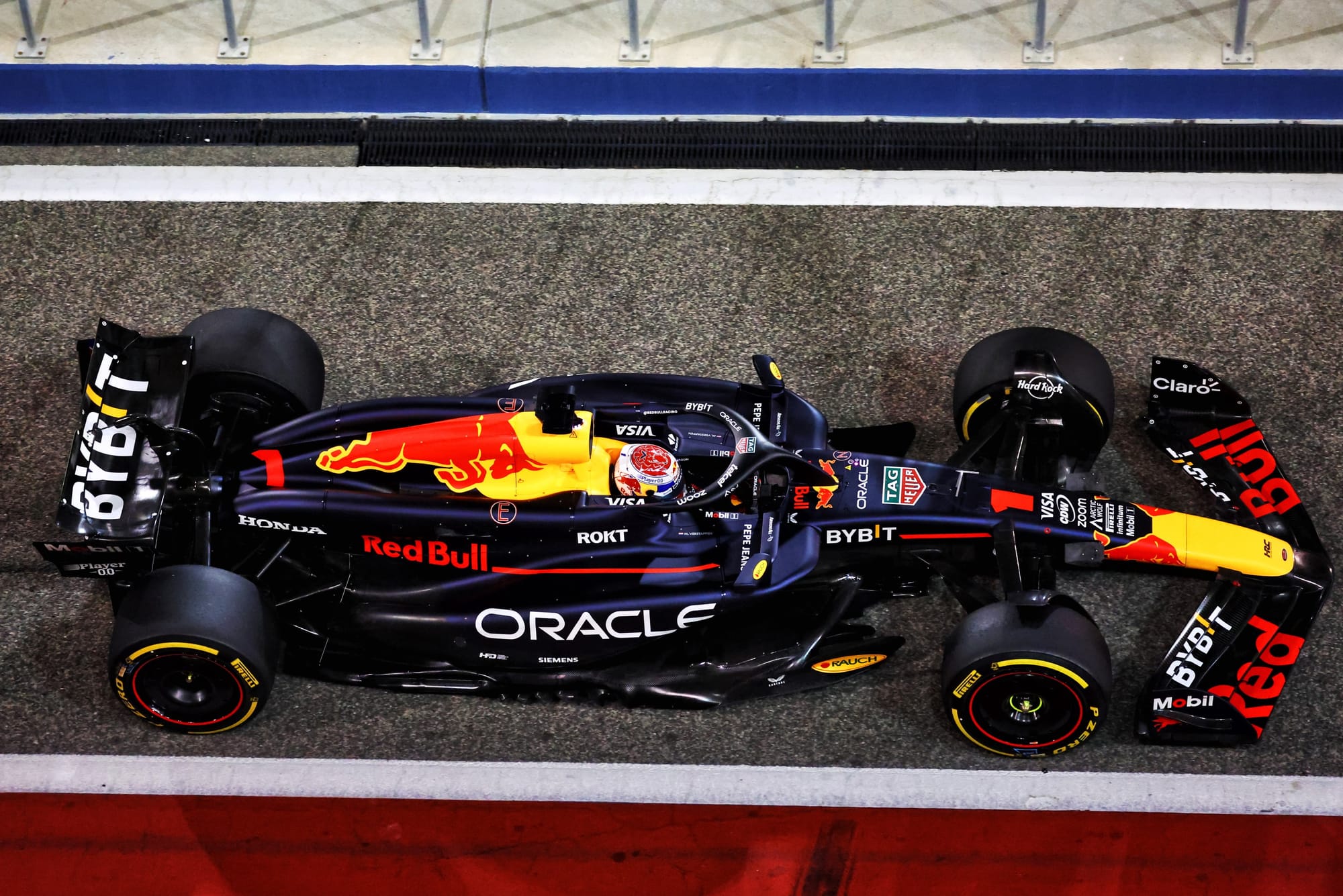
Not only did the Red Bull look like something rivals should fear when it was launched, it was arguably more visually impressive in reality upon its full reveal.
And not only did it look the part, it was also fast.
And not only was it fast, it was also reliable. Verstappen smashed through the 100-lap barrier easily on day one of testing, clocking up a final tally of 143.
While the laptimes mean little it is clearly a strong start.
The car didn’t look the tidiest in the morning, either on camera or to our team trackside, but it was still quick enough for Verstappen to be the first to go faster than he did on day one a year ago - then end the day on top.
Verstappen’s race engineer Gianpiero Lambiase couldn’t help but grin when Verstappen went quickest by eight tenths in the late afternoon. By the evening he was 1.1seconds clear.
But the headline laptimes aren’t even the most impressive part.
More important is that with such a different car visually, and quite possibly aerodynamically given the changes, the mileage has allowed Verstappen and Red Bull to run through their plan without any obvious interruption.
In short, if you are hoping the new car being so different would trip Red Bull up early on, that doesn’t look like the case at all.
It guarantees nothing for the rest of the test, let alone next week’s race or the season as a whole, but it’s as ominous a start as Red Bull could have made. - Scott Mitchell-Malm
Gary Anderson’s trackside view
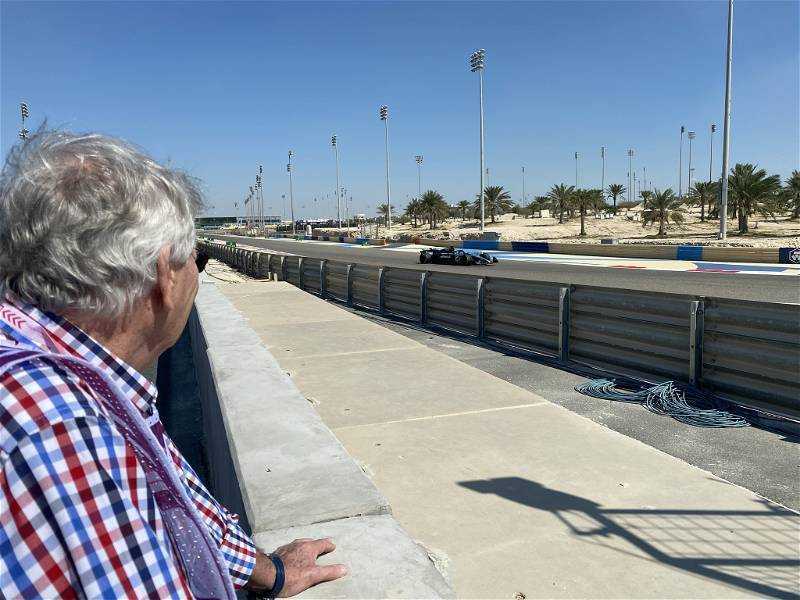
The early stages of pre-season testing can be tentative, but with the amount of simulation work these teams do they hit the track running far better than they once did. Watching trackside in the first half of the day, it was clear that these were all cars working at least reasonably well.
But it wasn't all plain sailing. Verstappen in the Red Bull may have set the pace, but from our vantage point at Turn 11 he wasn't able to carry the speed into the corner that I would have expected. That meant he had some understeer, sometimes even running out of road at the corner exit. It was nothing terrible, but it wasn't the Verstappen/Red Bull combination as we know it.
Others struggled more noticeably. Esteban Ocon in the Alpine was battling understeer no matter how he approached the left-hander and often had to take several bites of the throttle at the exit. That was probably the car with the most obvious understeer, but it was a trait many cars showed.
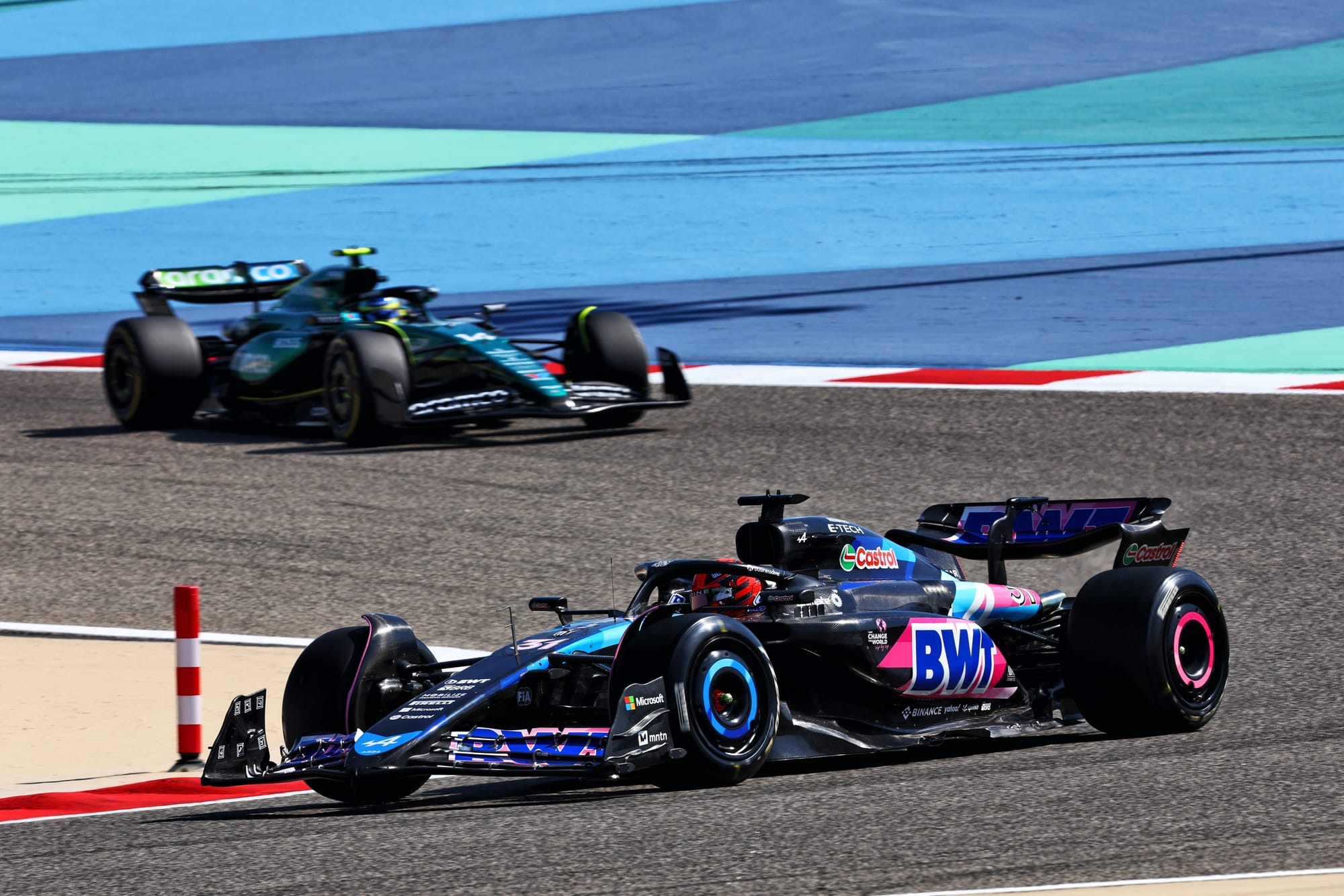
The Aston Martin in Fernando Alonso's hands looked quite responsive once in the corner and was probably all-round the best-balanced car, but even then there was a little understeer at entry. That understeer increased with what appeared to be set-up changes mid-morning.
The Ferrari and the Haas both looked reasonably honest, as did the Mercedes. But the RB didn't look entirely convincing, often picking up a bit of a rear-end wobble in the mid-to-exit phase.
My observations were from early on the first day of testing so there's still a lot more to learn about these cars, but what was clear was the difficulty continues to be getting the front-end grip mid (slow-ish) corner with these cars. But considering this was just day one, it was a good start for the 2024 cars. - Gary Anderson
A key RB20 feature in detail
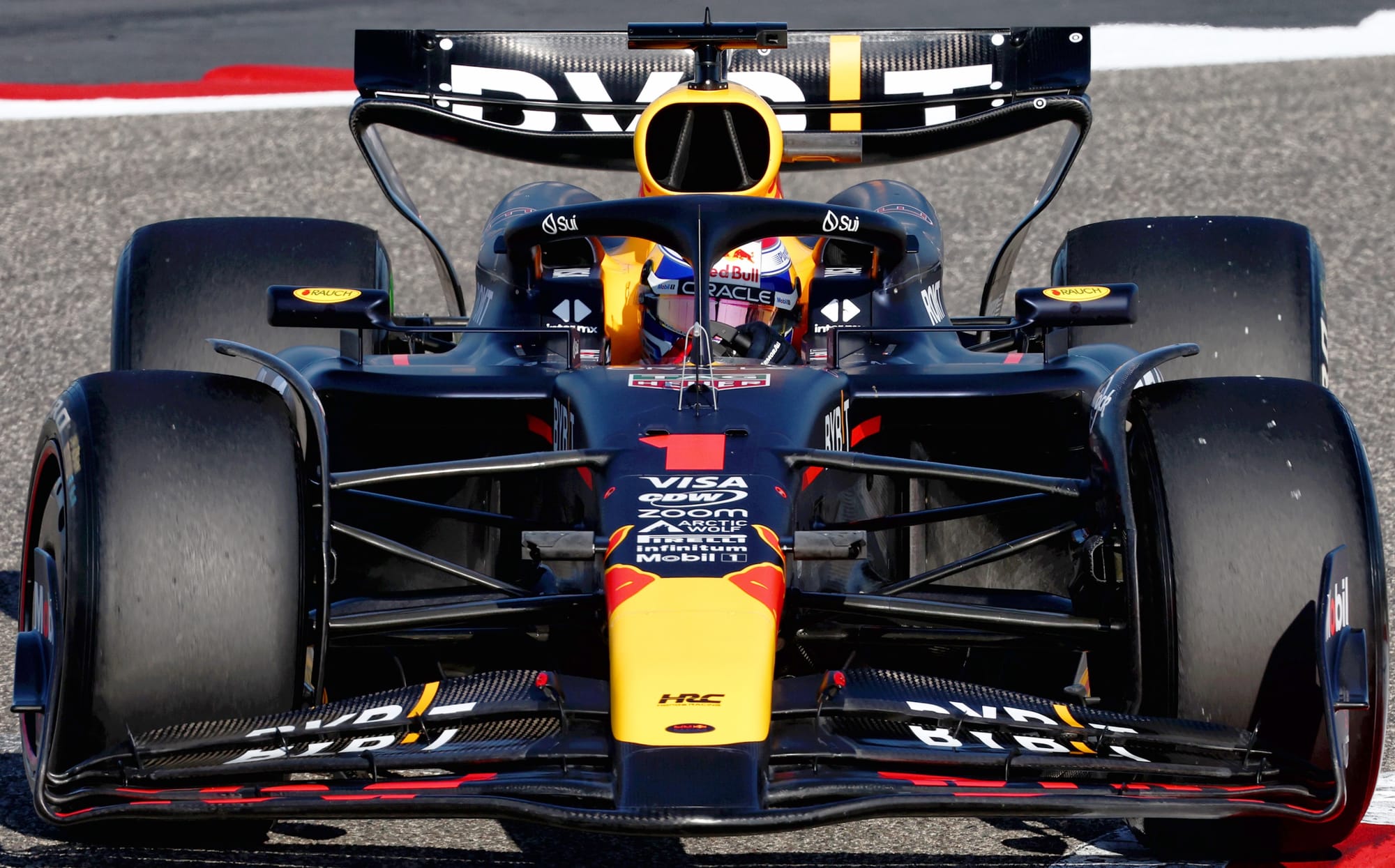
When Red Bull’s RB20 broke cover at its launch we were convinced we could see a vertical sidepod inlet in a significant departure from its 2023 car’s design (indicating a move away from a trend Red Bull started and almost everyone else has adopted for 2024).
Well, we were right. Sort of. As Gary Anderson explains in full in this piece, Red Bull’s unusual treatment of the radiator intake and sidepod undercut caused quite a stir, and many people started to call it a copy of a Mercedes' ‘zero’ sidepod concept. But it is far from that.
Some revealing imagery of the Red Bull in a more exposed form shows just how much is being packed into the sidepods, which clearly serve an aerodynamic and cooling purpose.
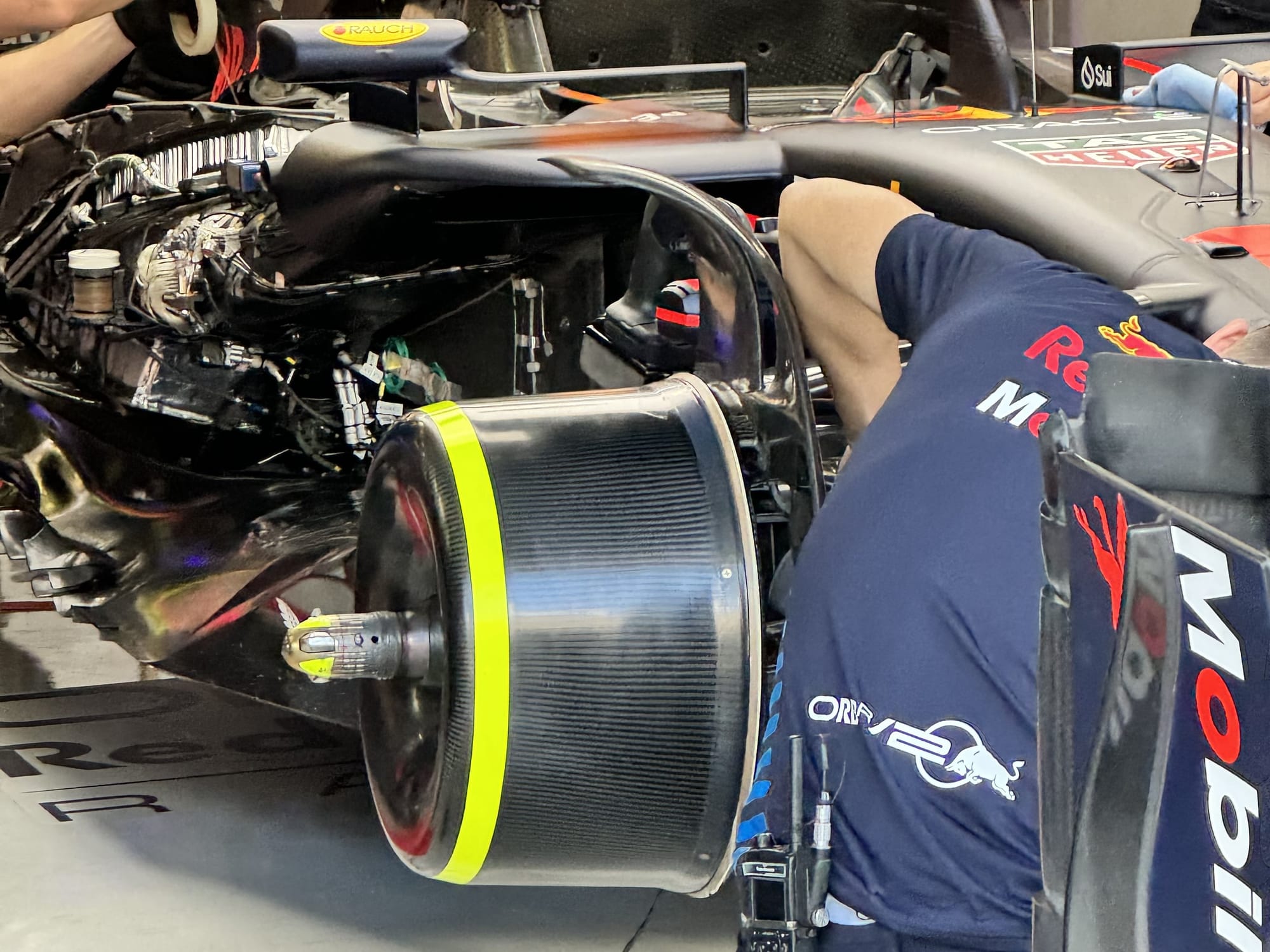
Over the last couple of seasons, Red Bull has been the trendsetter as far as the visual concept is concerned but to everyone’s surprise it has changed direction for 2024. What it hasn’t done, clearly, is taken as much of a Mercedes sidepod inspiration as some have interpreted or made out.
The hulking engine cover shoulders are very reminiscent of the unsuccessful 2023 Mercedes but that’s it. Red Bull’s sidepod is its own direction, with internals that are complicated and bulky enough to make shrinking all of it further or relocating it a colossal undertaking.
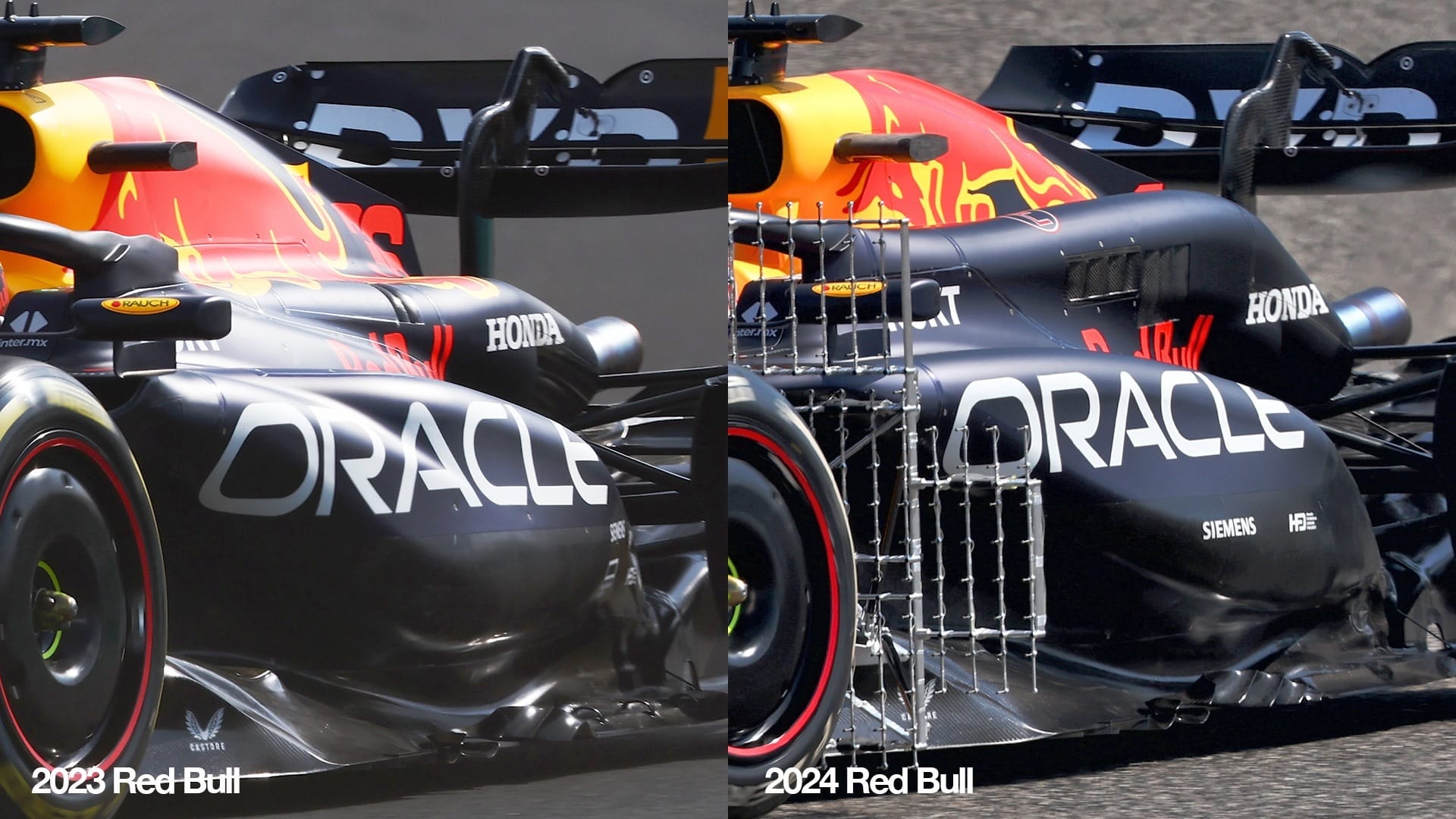
There’s some talk of the RB20 evolving closer to a Mercedes zeropod style. Our theory is that the Red Bull sidepods could get tighter, but are unlikely to disappear into zeropod territory.
But we’re willing to be proven wrong because that would just be another colossal engineering feat on top of what Red Bull has already surprised us with so far. - SMM
New Williams has an old part…
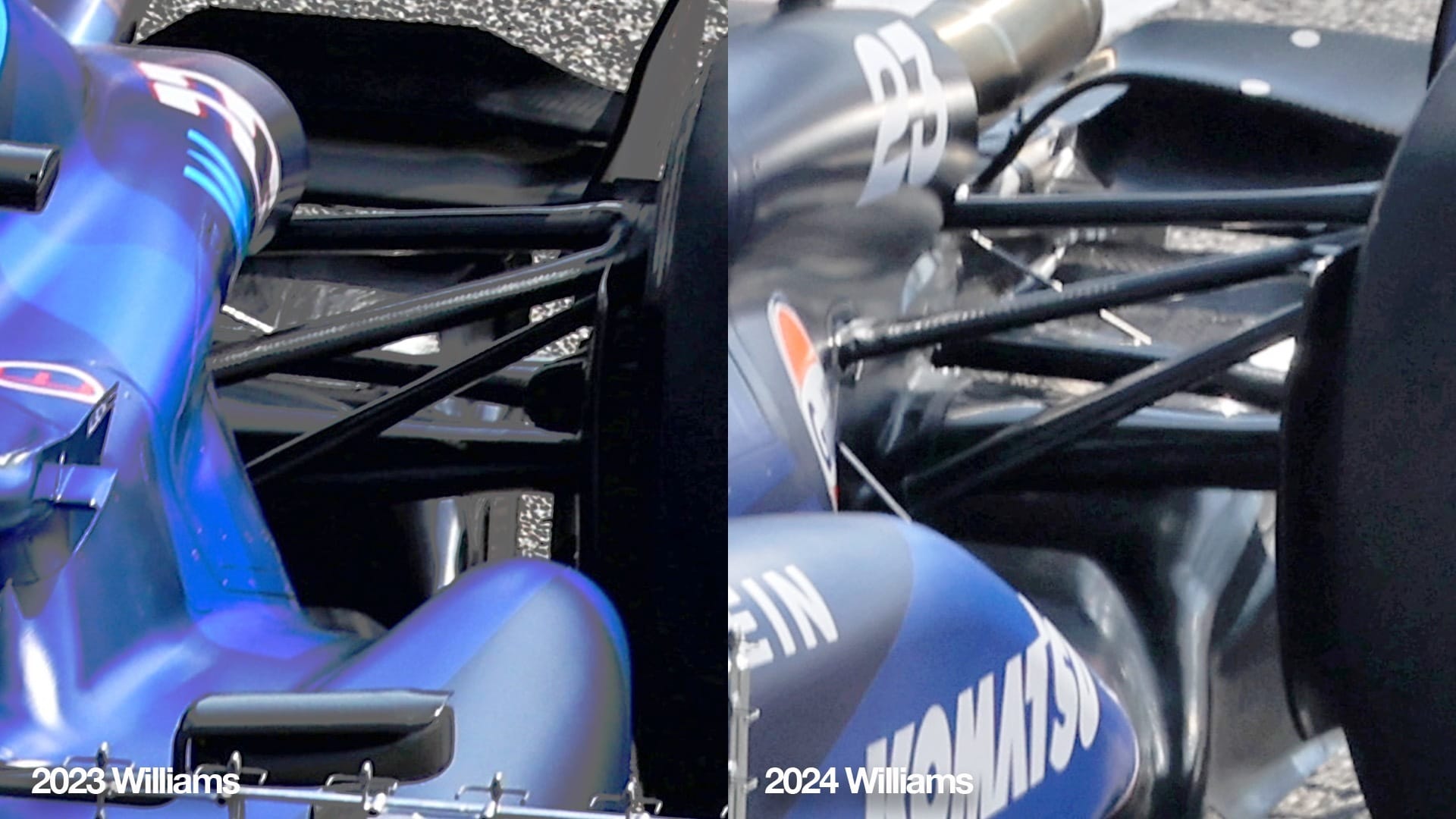
We’ve finally seen the Williams in full and in addition to understanding its design evolution for 2024 in more detail, it became clear that the new FW46 has an old part.
Williams is still using the 2023 rear suspension it got from Mercedes - that’s a pullrod rather than a pushrod, which Mercedes has switched to for 2024.
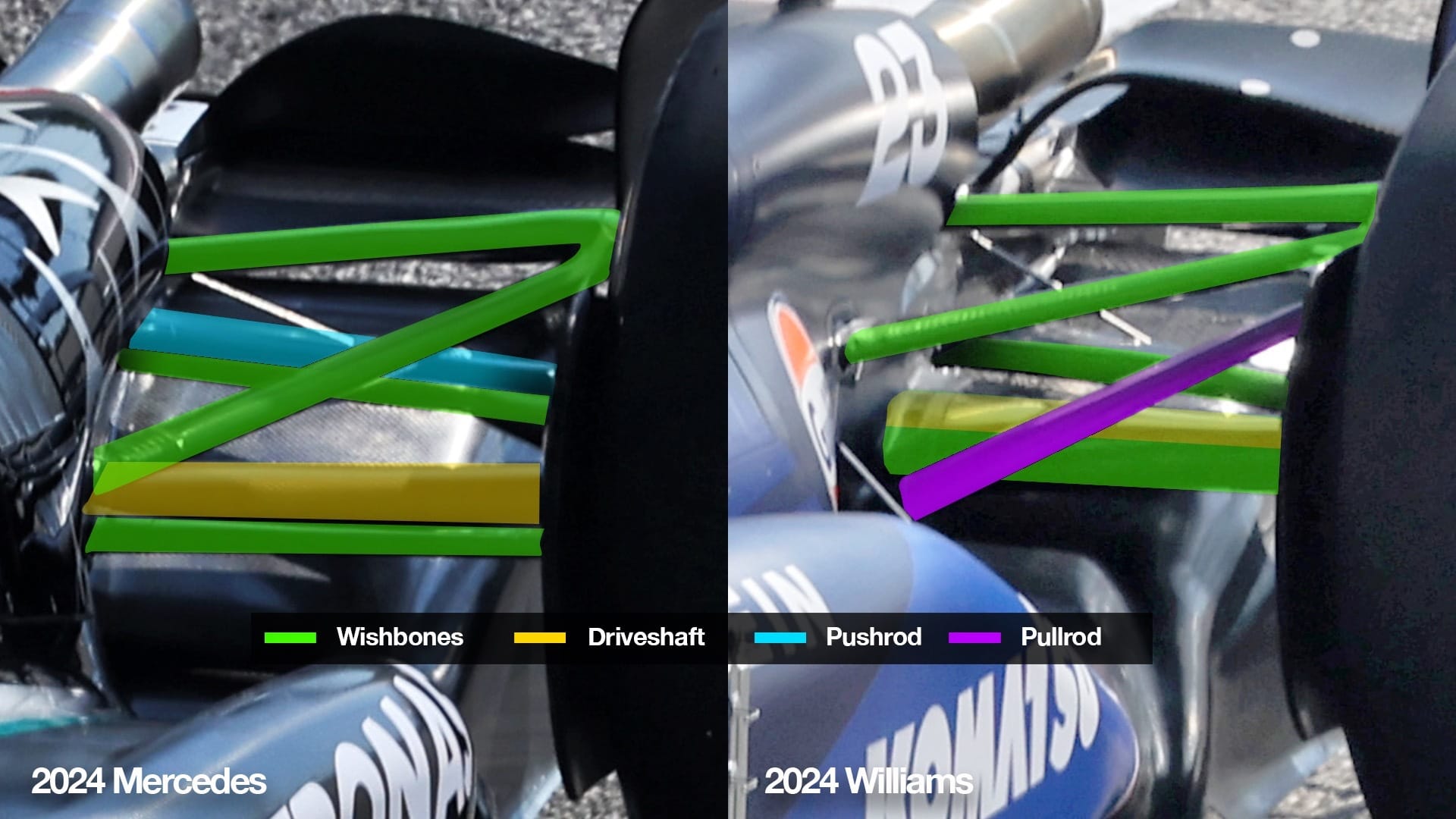
Like Aston Martin, Williams is a Mercedes engine customer that has a supply deal to take the rear suspension. But William has stuck with the 2023 spec for what seems to be a mix of logistical reasons (it’s easier for Mercedes not to have to build loads of new rear suspension units for another team) and cost reasons (it saves Williams some money under the cost cap to use year-old parts).
As with most of the cars we have seen so far this year, Williams has taken inspiration from the 2023 Red Bull template. And while there are some relatively subtle changes like the wider nose tip, a further evolution of its Red Bull letterbox-shape sidepod inlets, and more aggressive floor edge geometry, there’s nothing that has stood out on the Williams so far.
Like Gary Anderson said in his technical review of the FW46: “It’s all getting a bit more like a one-make formula. Paint them all the same colours and it might just take a couple of guesses before you could say who is who.” - SMM
…and it is on the back foot
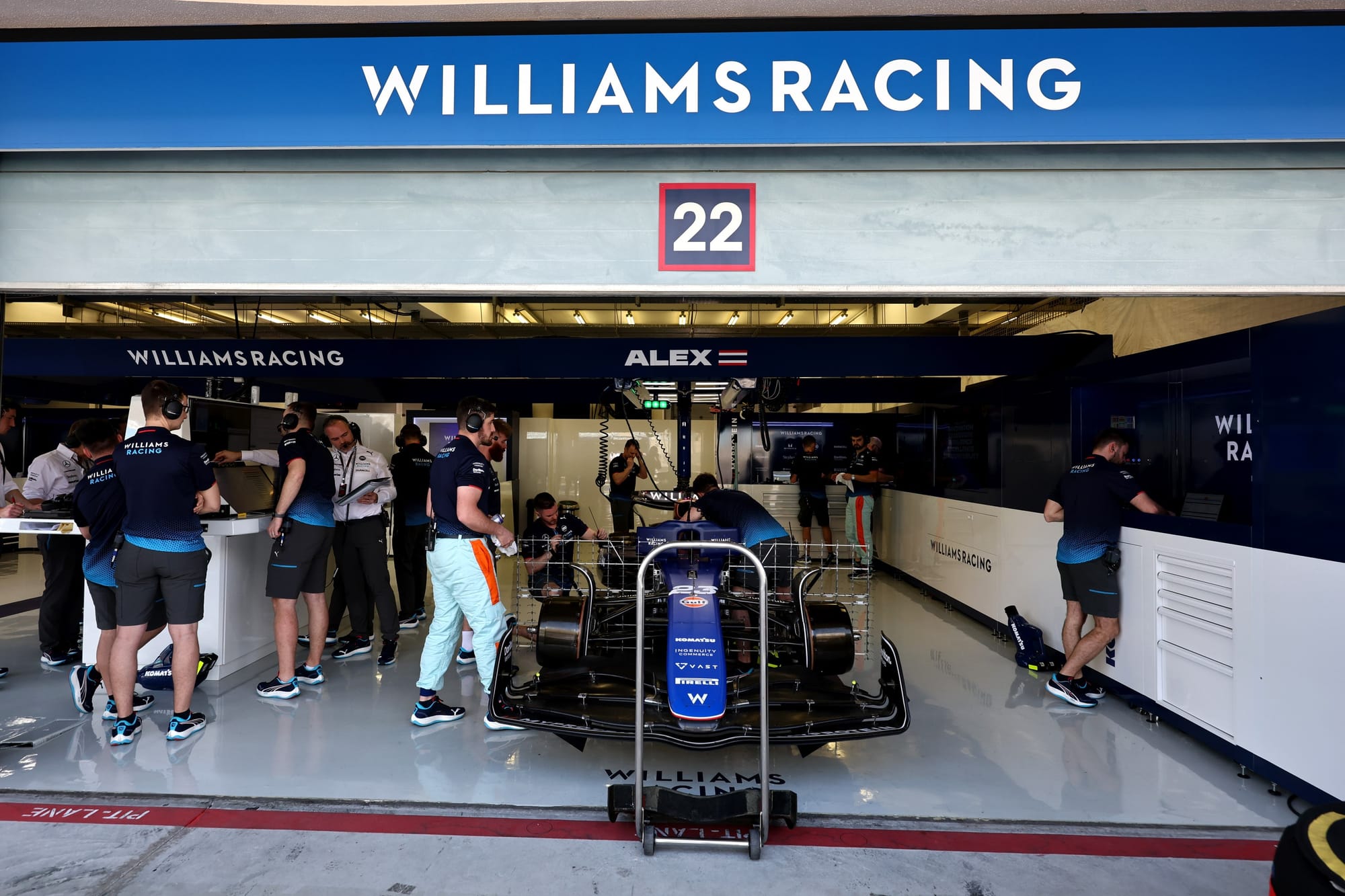
Williams only ran its car for the first time in Bahrain the day before pre-season testing began, having opted against the Silverstone shakedown we have come to expect in recent seasons.
The reason for that was simple: the car wasn’t ready. Or at least, was late enough for Williams to be better off giving itself more flexibility with this late-in-the-day reveal. That was put down to what team boss James Vowles calls “absolutely enormous” changes to how the team has conceived and developed its chassis and other key parts of the car.
The upside was meant to be a change in some long-running negative car characteristics. Long, high-speed corners that ask a lot of the car’s aerodynamics, and low-speed ones that require a combination of steering lock and braking, have tended to be where Williams has struggled.
There was talk in advance of testing from both Alex Albon and Logan Sargeant of the car feeling different on the simulator, albeit needing a different driving style to before. But we haven’t had much chance to validate that on day one.
Whoa! 😮
— Formula 1 (@F1) February 21, 2024
Logan Sargeant goes sideways through Turns 9 & 10 but keeps his Williams out of the barriers 😰#F1Testing #F1 pic.twitter.com/eBwqxE9qdR
It wasn’t a write-off by any means, but day one was not great for Williams. It had a pretty low lap count compared to other teams due to two on-track stoppages - a suspected fuel system issue for Albon and driveshaft issue for Sargeant.
"Although both drivers had only limited running, we were able to complete some useful work to understand the basic characteristics of the FW46 and to correlate these with our simulations," said Williams' head of vehicle performance Dave Robson.
"Whilst there is certainly scope to improve the balance of the car, we are now in a strong position to focus on this tomorrow."
At 61 laps, 55 fewer than second-last in the mileage rankings, Williams is the closest we’ve got to a team in trouble at the moment.
It’s hardly an unsalvageable start to testing but it’s not what it needed. - SMM
McLaren wasn't hiding much (for now)
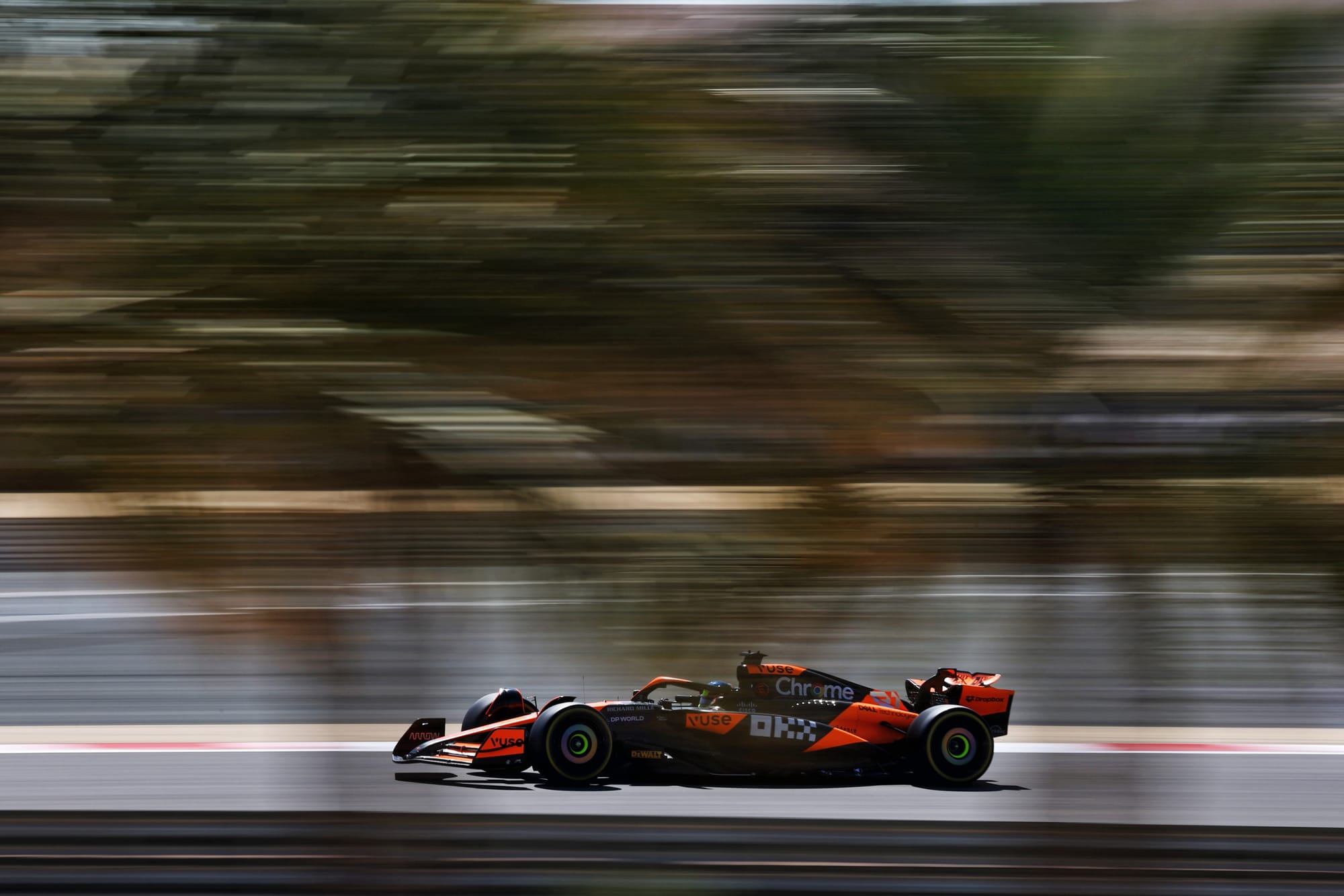
McLaren's secretive car launch, where team members were even joking at the lengths they'd gone to hide certain parts of the car, created plenty of anticipation for McLaren's arrival at the Bahrain test.
But when the MCL38 first rolled out of the pitlane on day one, there was a distinct lack of jaw-dropping reveals.
There's a deeper but marginally narrower sidepod radiator inlet, an increase in the inboard mounting width of the top front wishbone and fewer turning vanes on the floor edge, but no major departures from what we've seen elsewhere on the 2024 grid.
That could easily change of course, given it's only day one of the rest. But with a week until the first race weekend of the year, there's limited time to make changes.
So how did the current car perform?
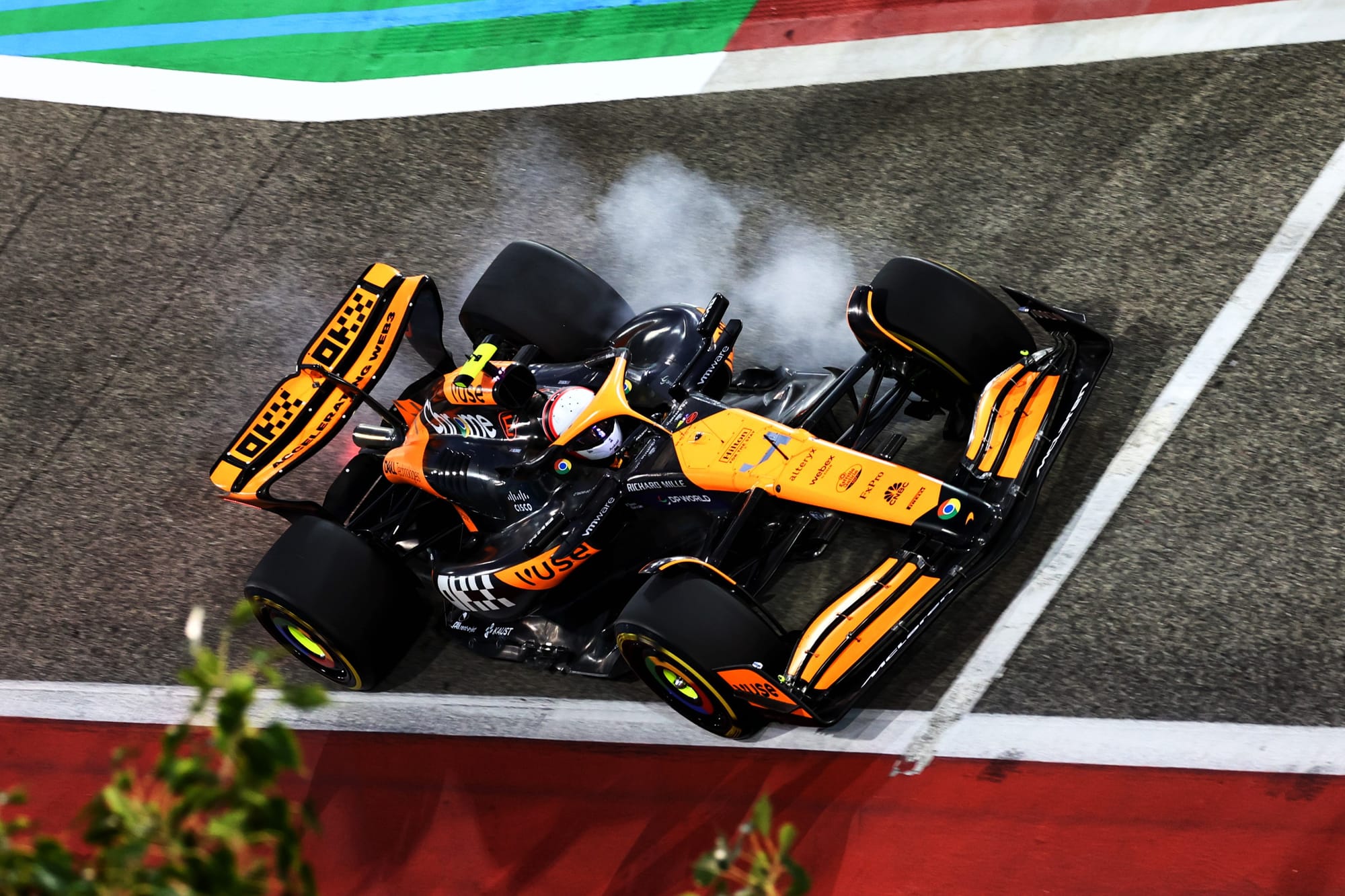
Well, Oscar Piastri and Lando Norris completed 130 laps between them (ranking McLaren sixth on the day one mileage chart) with the latter ending up second fastest on the leaderboard.
Unfortunately for Norris, he was still over 1.1s slower than Verstappen but we're unlikely to see anything approaching meaningful single-lap running until at least Thursday afternoon. - Josh Suttill
The unusual sign of new Haas boss’s impact
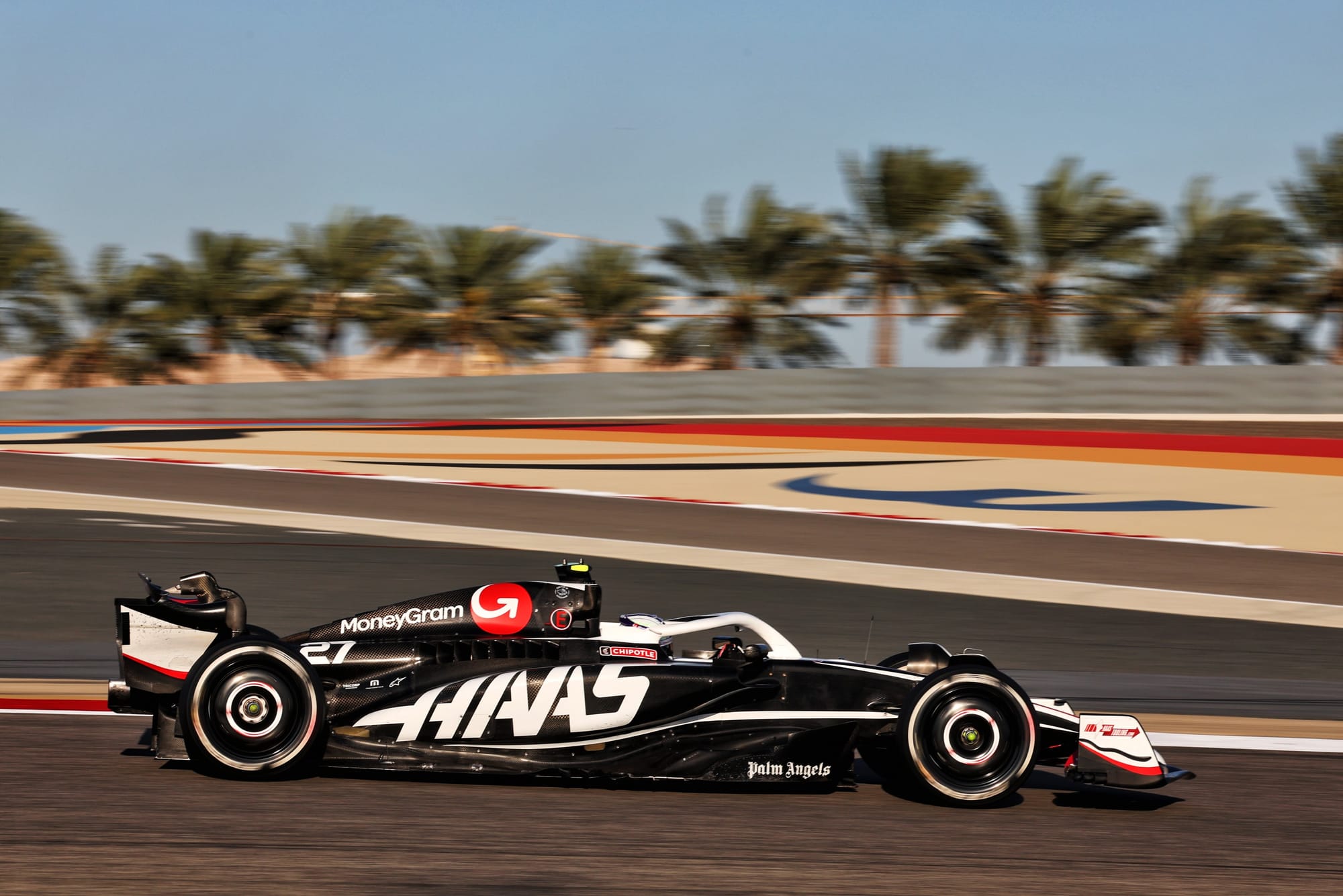
If you judge day one by laptimes alone - and if you do, come on, you should know better! - then Haas is in for every bit as tough a 2024 as some expect.
Hopes are not tremendously high for F1’s American team, at the start of the season at least. And of the 18 drivers to set a laptime on Wednesday, Kevin Magnussen and Nico Hulkenberg were… 17th and 18th.
It’s quite possible this will be ‘real’ to the extent of Haas being the slowest car. But surely not a second off the pack. So this was about as misleading an opening day as you could imagine.
Having had some bullish pre-seasons in the past, with headline laptimes to shout about, Haas is going in a new direction at the start of its Ayao Komatsu era. This is the team’s first pre-season under his leadership following Guenther Steiner’s shock departure over the winter. And the keyword for this test at Haas is how “focused” it has been.
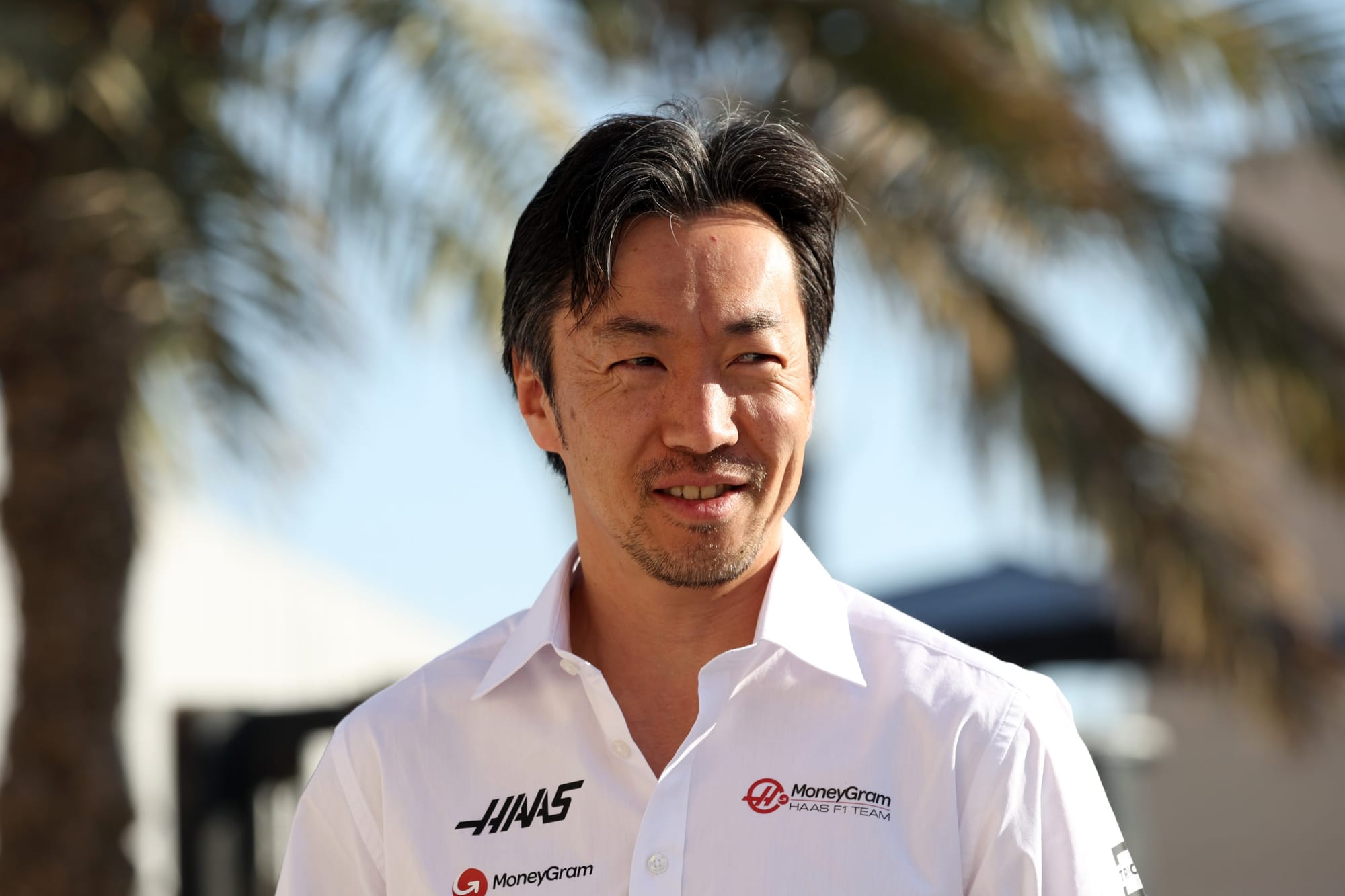
Komatsu has made it clear that Haas needed to maximise pre-season mileage as much as possible this year to get as much data as possible and ensure it develops its car from there. To that end, it had already completed two filming days before today (when it topped the mileage rankings at 148 laps).
The shift in focus is perhaps best demonstrated by the sight of the VF-24 adorned with aero rakes early in the day. Magnussen couldn’t recall driving a Haas with such equipment before and seemed to think it was a genuine (if unusual) symbol of the team’s new Komatsu approach - as was Komatsu’s presence at the track before and after several others had arrived or left.
“It seems like we’re not dreaming so much this year,” said Magnussen. “We know the job we have ahead of us and the situation we’re in.” - SMM
Teams have contrasting run plans
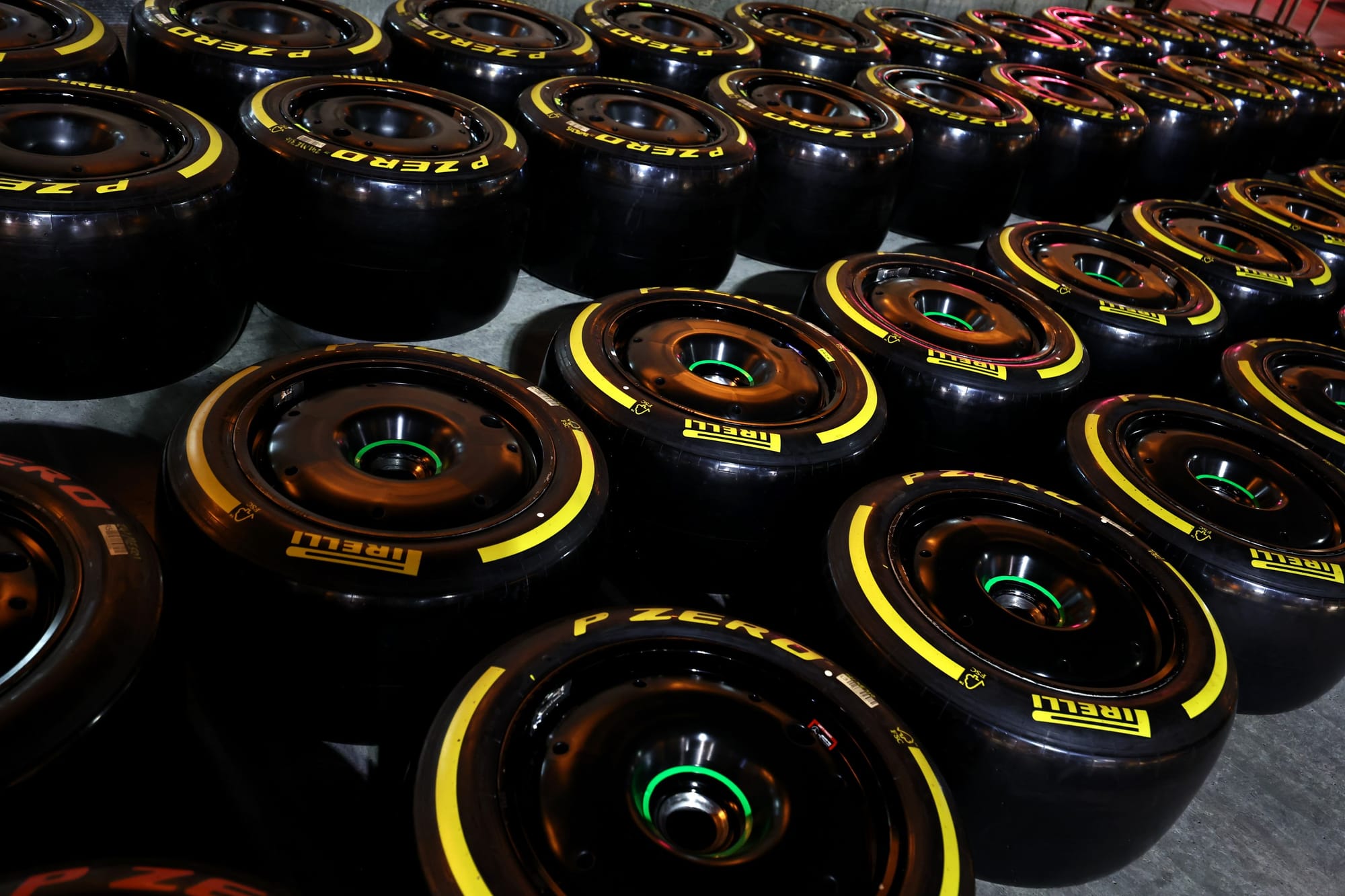
For the first time, Pirelli has released the tyre sets teams have chosen for the test. That’s revealed a little about how the 10 teams are approaching testing.
Each team gets 35 sets of dry-weather tyres but can take their pick of how many they want from the five available compounds. Inevitably the focus for most is on the three hardest compounds - the C1, C2 and C3. These are the compounds that will be used for the Bahrain GP weekend that follows the test.
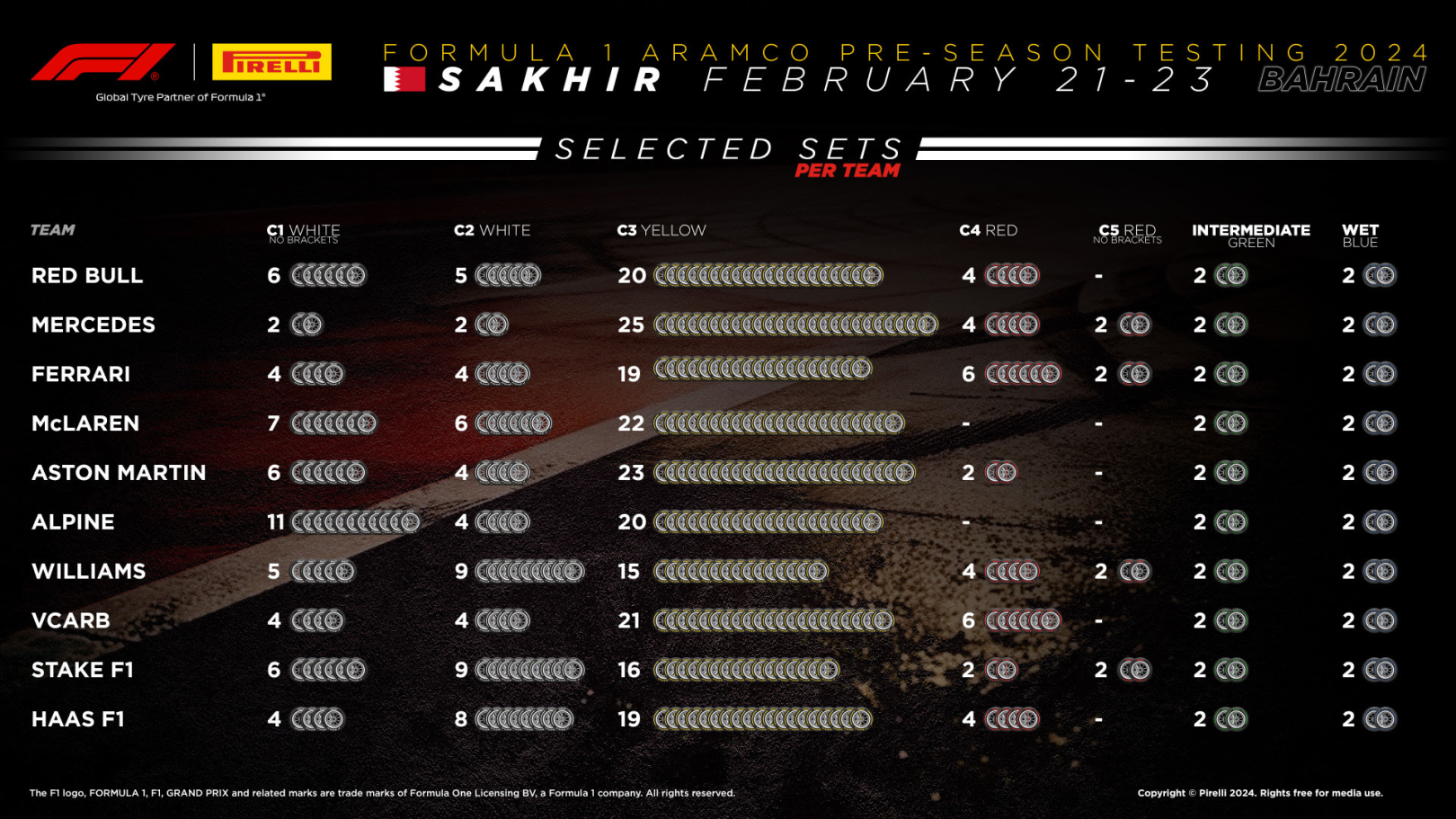
But even within that there is significant fluctuation, as although every team has opted for more C3s than anything else, the range stretches from 15 sets (Williams) to 24 sets (Mercedes). In the case of Mercedes, that means it has the fewest C1 and C2 sets of anyone with just two of each.
Others have more of the harder compounds, with Alpine having 11 sets of the C1s, four more than the next-most prolific, McLaren. When it comes to the C2s, Williams and Sauber have the most sets with nine.
The two softest compounds are less popular. McLaren and Alpine have no sets of either, while Red Bull, Aston Martin, RB and Haas have also eschewed the C5s. Just four teams have C5s - Mercedes, Ferrari, Williams and Sauber.
All that means that we won’t see vast amounts of running on the two fastest compounds. - Edd Straw
Solid but unspectacular for Mercedes so far

"Overall, the W15 does feel nicer to drive than last year's car" was George Russell's early verdict after driving Mercedes' 2024 challenger.
Much like Ferrari, improving the drivability of the car was a key aim of the team over the winter and there's certainly an early indicator that it may have achieved that.
That's not to say the team will be getting ahead of itself. Right from its understated launch, expectations have been carefully managed.
There was no headline laptime or shock technical reveal when it rolled out of the pitlane on Wednesday morning, simply a sensible, relatively smooth sailing day of testing.
And you get the sense that for a shell-shocked Mercedes team, that's exactly how it will have hoped the first day of 2024 testing was going to go.
Now it's all about building on that progress over the next two days and finding out if there's enough pace in the car and whether this is the right platform to keep building on. - JS
Analysing the headline times
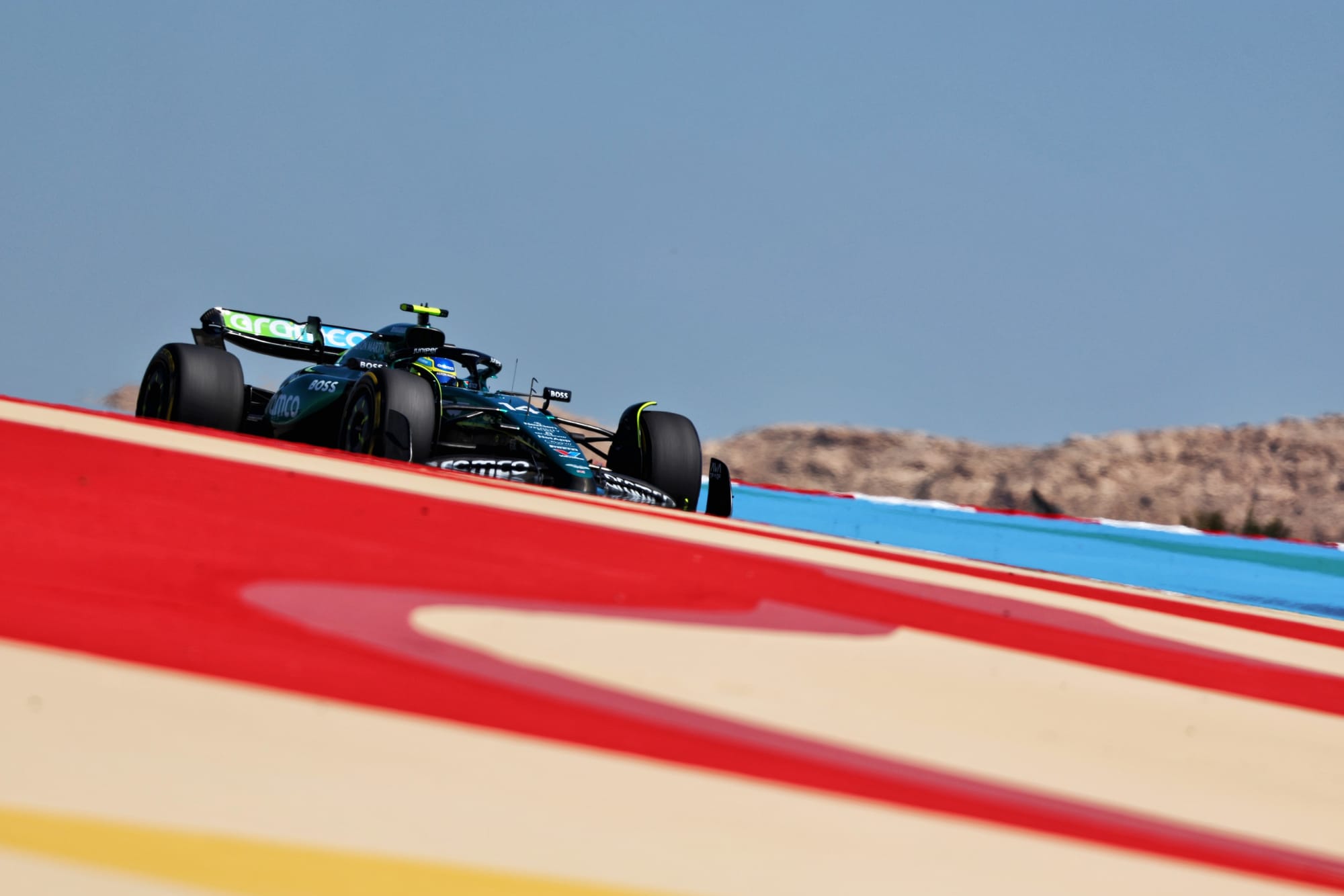
Day one of testing is far too early to judge, but at the risk of bursting everyone’s hopeful bubble the early numbers make concerning reading.
To get a simple indication of pace, I have taken the single-lap pace of each driver on average over the final six races of 2023 as a percentage. Then I’ve done the same for testing.
Every driver running in the morning is compared to whoever was fastest then, with those driving in the afternoon compared to the fastest during that running.
Verstappen was fastest in both sessions, with George Russell the only other driver to drive in both.
Verstappen’s fastest afternoon lap was 1.329% faster than his morning lap, which will be a bit down to set-up improvements but mostly because of track improvement. He was also fastest on day one of last year’s test and this year is 1.635% faster than that.
To get some sort of comparison of who has improved and who hasn’t, this table shows the difference in percentage between the last six races of 2023 and this first day of testing.
Alonso -0.154%
Verstappen -0.122%
---
Tsunoda 0.029%
Stroll 0.074%
Ricciardo 0.210%
Norris 0.377%
Piastri 0.445%
Leclerc 0.522%
Sainz 0.688%
Gasly 0.718%
Bottas 0.730%
Sargeant 0.833%
Zhou 0.854%
Ocon 0.886%
Albon 1.082% (C4)
Russell 1.316%
Magnussen 1.531%
Hulkenberg 3.641%
All but one of the participating drivers set their best times on the C3 tyre.
The fact that both Ferrari drivers are close to each other, and that Leclerc ran in the morning and Carlos Sainz in the afternoon shows we haven't seen that Red Bull-like improvement from Ferrari in the early stages of testing. The same applies to McLaren, with Piastri running in the morning and Norris in the afternoon.
It is early days, but for some it might be a long season. - GA

